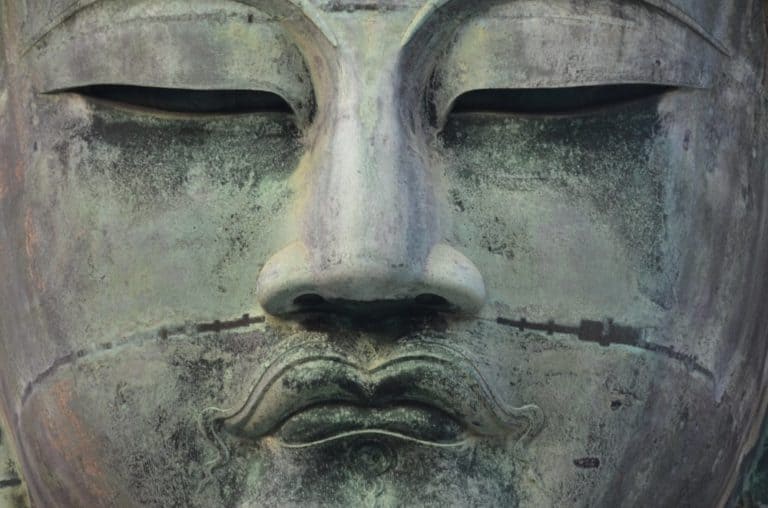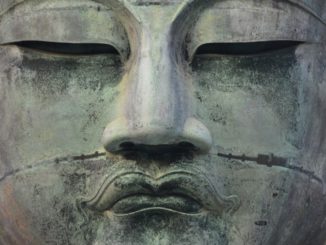Kamakura
Population of Kamakura: 172,220
Telephone area code: (0)467
Automotive symbols: 鎌倉市
Surface area: 39,67 Km2
Kamakura is a Japanese town situated an hour away from Tokyo by train in a southerly direction.
This was the political heart of Japan from 1192 to 1333, a period which, because of the city’s prominence, was known as the “Kamakura period”
The city is a natural fortress being surrounded on three sides by hills and on the fourth side, by the ocean.
For this reason, in addition to the fact that it was his birthplace, in 1192 Minamoto no Yoritomo chose this location as the seat of government.
The Kamakura period is distinguished by important religious developments in Japan.
Amongst these was the affirmation of Zen as the prevailing independent religion, (it had previously been linked to the Tendai school of Buddhism) and the emergence of new forms of Buddhism such as that created by Nichiren who was principally active in Kamakura.
What to see
After a period of decline following the city’s destruction during the first Muromachi period when it was still the capital of Kanto, Kamakura became known as an important religious centre and a place of pilgrimage, especially from 1600 onwards.
The Kamakura period coincided with a disengagement from the Zen school as the autonomous school of Buddhism towards the Tendai sect and Kamakura itself became an important focal point in the emergence of this new religious current
During the Kamakura period, other new Buddhist sects came into being, such as the Nichiren sect which was very active in this city.
The main attractions are the numerous Buddhist temples as well as the Great Buddha, the second largest bronze statue in Japan after the giant diabutsu (the Giant Buddha) of Nara.
The Great Buddha dedicated by Minamoto no Yoritomo can be found inside the precincts of the temple of Kotoku- in.
It is the symbol of Kamakura and it is also possible to visit the inside of this impressive artistic achievement.
The Meigetsuin temple is another popular place to visit and is particularly celebrated for its hydrangeas in June and for the colourful maple leaves in autumn.
Famous for its cherry blossom flowers is the most important Shinto shrine in the city, the Tsurugaoka Hachimangu which is just 5 minutes on foot from the station.
It is also a popular place to visit on the first day of the new year.
The Kannon Hasedera temple is famous for its statue of Kannon which is over 9 metres tall, the largest wooden statue in Japan.
It is also worth visiting the bay that can be enjoyed from the temple.
The gardens are a must for visitors in June in order to see the spectacular display of hydrangeas.
The Zeniarai Benten temple which is situated in a cave is also very impressive.
It is said that it brings good luck to immerse a bank note in the refreshing waters of the goddess Benzaiten which come from a source inside the temple’s cave.
If you are interested in enjoying the Japanese “seaside,” the beach at Kamakura is strongly recommended.
History
The history of Kamakura has strong links to the war between two important aristocratic clans: the Taira and the Minamoto and the emergence of the Japanese warrior class which would have a profound impact on the country’s history and culture.
The two clans, both of whom had links to the imperial family, were in constant conflict with the aim of influencing the choice of the Emperor’s successor and thus, who would govern the country.
The conflict came to a head with the decimation of the Minamoto clan by the Taira in 1160.
But, one of the clan’s heirs, Minamoto no Yoritomo, over the course of 20 years, succeeded in reorganizing the strength of his followers and, in a confrontation with the Taira, he defeated them which resulted in the new Emperor investing him with the title of Shogun.
This was the beginning of the Kamakura period and the emergence of the warrior class in Japan.
Yorimoto then chose the impregnable city of Kamakura as the seat of his government.
Subsequently, Yorimoto married a member of the Hoji family, a branch of the Taira clan, who would eventually take back power in their turn.
The tumultuous fluctuations in the history of the Taira and Minamoto clans provided the inspiration for numerous Japanese epic narrative works of the medieval period such as the Heike Monogatari (The Tale of the Heike).
It would appear that at the height of its splendour, Kamakura had around 200,000 inhabitants and was counted amongst the most heavily populated cities in the world.
Kamakura retained its role as the Kanto region’s capital until the beginning of the Muromachi period, but, having been destroyed during a feudalist attack against the Shogun of Kyoto, it’s importance diminished and the city slid into a period of decay.
The central administrative function for the region of Kanto was initially awarded to Odawara and later, with the institution of the Shogunate of Tokugawa, to Edo (as today’s Tokyo was known).
During the Edo period, the city developed a different role as a place of religious pilgrimage, a role which has continued into present times
In the 20th century, Kamakura has earned a reputation as a seaside resort and a popular destination for surfers.
Huge statue of Buddha in Kamakura
[Dec.2012] This was the first time to see the huge statue of Buddha in Kamakura since I was a high school student. I did not get surprised by the size this time, but to be…
Enoden, nostalgic railway
[Dec.2012] I do not know why but most of us feel nostalgic riding Enoshima Electric Railway. On the day we had a walk in Kamakura, we bought one day ticket which costs 580 yen and…



